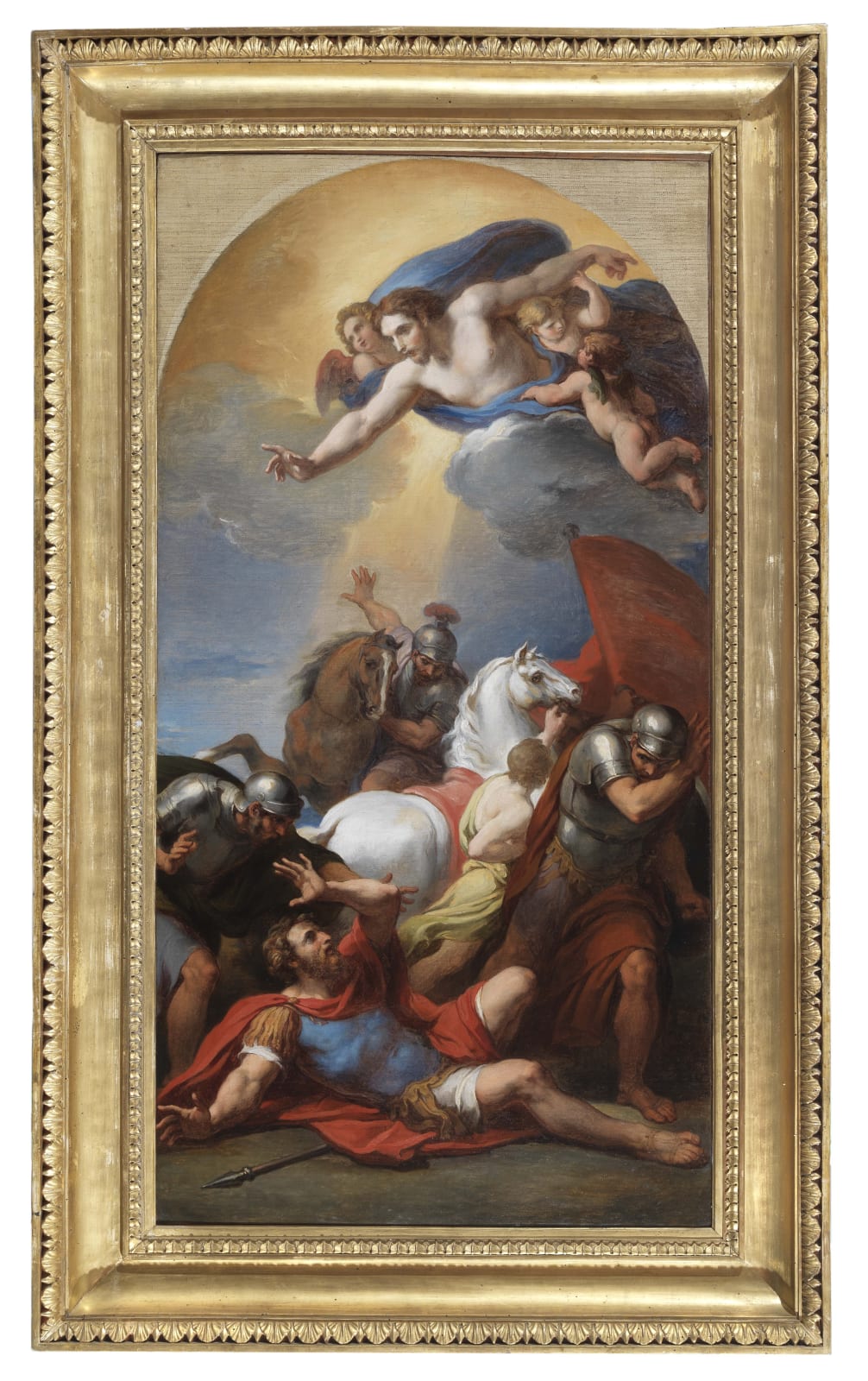Vincenzo CAMUCCINI
Provenance
Private collection, Rome
Exhibitions
Maestà di Roma da Napoleone all’Unità d’Italia. Universale ed Eterna Capitale delle Arti. (Rome 7 March – 29 June 2003), Entry IX.2.7., p.457, ed. Federica Giacomini.
Literature
G. Piantoni De Angelis, Camuccini 1771-1844, Rome 1978, Entry n.186, pp. 84-87.
C. Falconieri, Vita di Vincenzo Camuccini, Rome 1875, p. 212.
F. Giacomini, Vincenzo Camuccini. Conversione di Saulo in Maestà di Roma, Venice 2003, p. 457.
This painting by Vincenzo Camuccini, from a private collection in Rome, first reappeared on the market at the crucial exhibition entitled "Maestà di Roma", or "The Majesty of Rome", in 2003.
It is the finished preparatory painting for a large canvas commissioned from the artist by Pope Leo XII (1823–8) for the north transept of the Basilica of St. Paul's Without the Walls which had been renovated after being seriously damaged by fire in 1823.
Camuccini, who at the time was already a successful painter and a member of the Accademia di San Luca, only completed the altarpiece in 1835, after a long and complex gestation revealed not only by the painting under discussion here but also by a surviving body of preparatory studies and drawings that include a watercolour on paper squared in pencil, the method used by the artist to transfer the image onto this preparatory work.
The altarpiece remained in the artist's workshop until 1840, when it was finally moved to the Basilica along with a painting depicting St. Paul Taken Up to the Third Heaven, which Pope Gregory XVI had commissioned from Camuccini in 1839. The delay in installing the painting on the altar for which it had been painted may be blamed on the differences that arose between the artist and the "purist" party if, as his friend and biographer Carlo Falconieri writes, the Commission tasked with the Basilica's renovation kept postponing its installation because "they have no suitable place for storing it until the time comes to place it on the altar for which it is intended".
Our painting may realistically be identified with a picture which Camuccini presented as a gift to Monsignor Tosti and which is mentioned by Falconieri.
For a description, see Federica Giacomini, who writes that the preparatory painting:
belongs to a late phase in the project's development, being very close to the final version of the picture, the chief differences being the different pose adopted by the angel on the right, the position of Paul's lance in the foreground and other minor details. It illustrates the gradual decanting process immediately after the composition, achieved by eliminating such narrative details as the landscape in the background and the fallen
helmet in the foreground [..] a policy deliberately pursued by Camuccini in consideration of the enormous size of the space in which the painting would eventually be placed.
The painting addresses a popular theme in the artistic tradition of Pauline iconography, depicting the episode of Saul's conversion to Christianity as narrated in the Acts of the Apostles (Acts, 9:1-9). The New Testament story tells us that Saul, a resolute persecutor of Christians, converted to Christianity while travelling from Jerusalem to Damascus to organise the repression of Christians in that city. He was suddenly swathed in an extremely strong light and heard the voice of Christ asking him: "Saul, Saul, why persecutest thou me?" Blinded by the divine light, Paul wandered aimlessly for three days before reaching Damascus where he was healed by Ananias, the leader of the city's small Christian community.
Later artistic tradition interpreted his fall as a fall from a horse, and although that detail is not provided in Holy Scripture, if it is more than likely if we consider that the episode befell Paul while he was travelling on the road.
JOIN OUR MAILING LIST
Subscribe to our mailing list in order to receive news on new acquisitions, exhibitions, special previews and more!
* denotes required fields
We will process the personal data you have supplied to communicate with you in accordance with our Privacy Policy. You can unsubscribe or change your preferences at any time by clicking the link in our emails.
